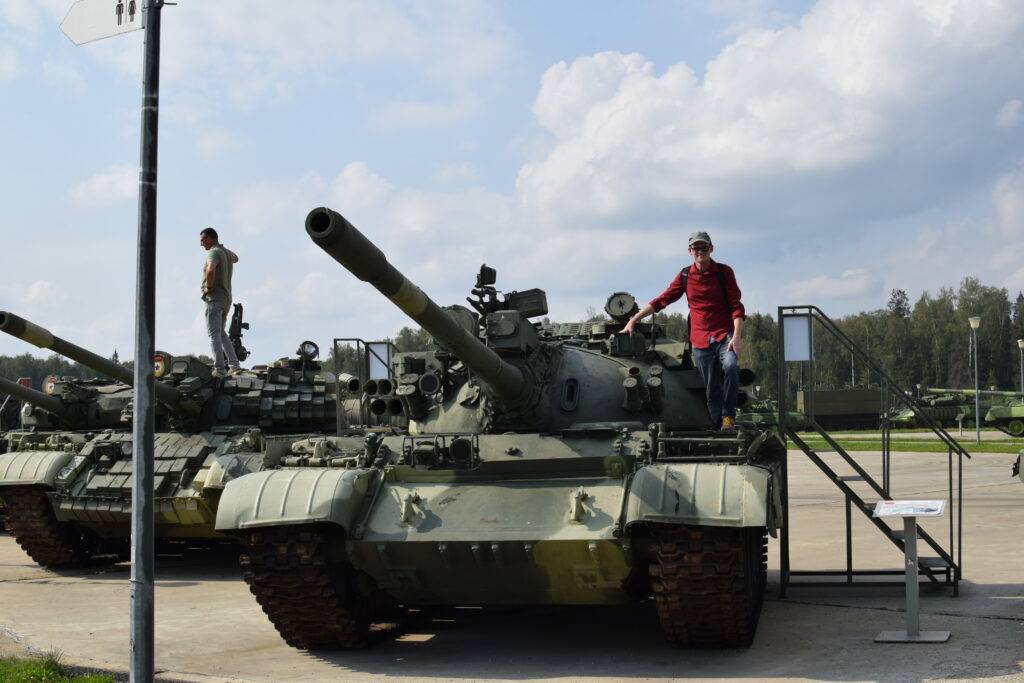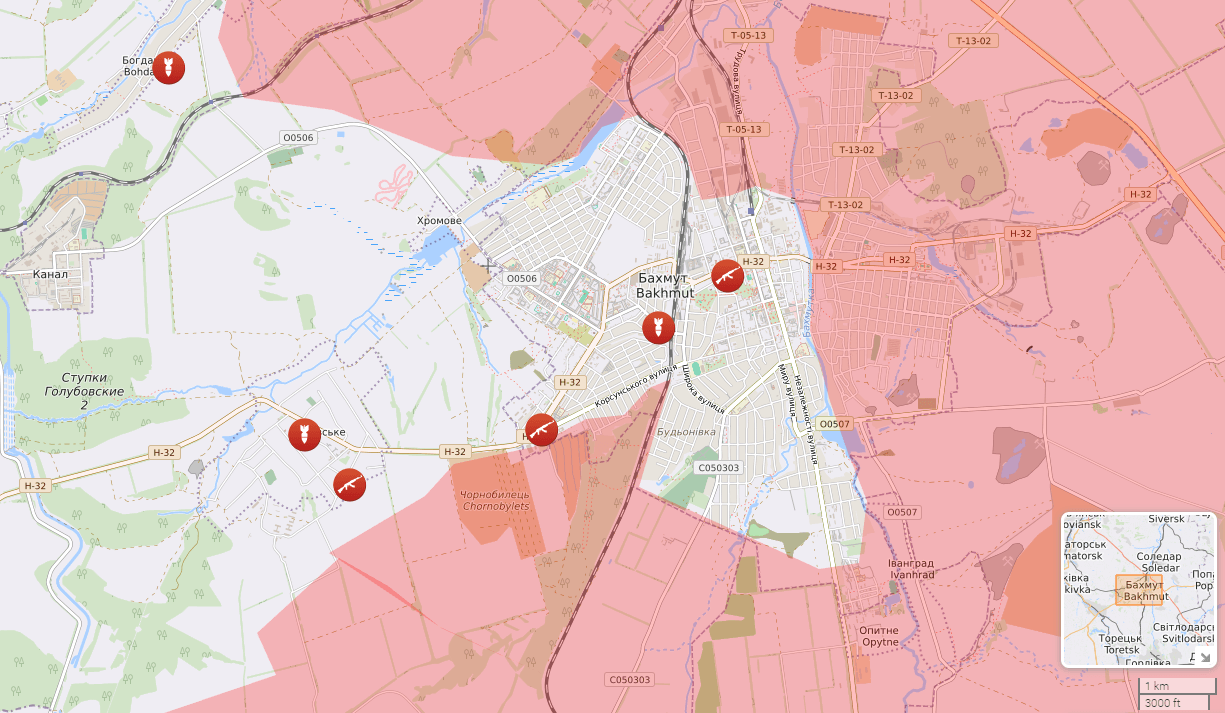Is there such a thing as a “homecourt advantage” in modern warfare?
The Bakhmut cauldron is one of the most curious episodes of the Ukraine special military operation for a few reasons. Firstly, it demonstrates just how little useful information is coming from the front. Both sides have been mostly tight-lipped about the numbers of people involved and the resulting casualties.
Video and photography published on social media, as it turns out, just isn’t particularly useful for understanding anything that’s happening beyond what was happening directly in front of the camera lens. The famous ISW, for example, just endlessly quotes Russian milbloggers, who are mostly just quoting each other, and at least some of them are trolls, deliberately spreading misinformation (for internet clout or other reasons), and some are actually agents from the other side. For example, Darya Trepova, a known Navalny supporter, posed as a patriotic milblogger long and successfully enough to get close to Vladlen Tatarsky and kill him. That, if nothing else, should prove that random voices on the internet aren’t necessarily publishing true information, and there’s usually no way to definitively verify what they’re saying. In short, most of the “open source information” is just white noise and there’s little point in obsessing with it, and I’ve said this before.
The second reason I find Bakhmut interesting is because there seemed to be a reversal last month. There was a moment when it seemed that Ukrainian forces were withdrawing, and some had in fact withdrawn, and it’s understandable why. With only one narrow road in and out, Bakhmut was obviously just a bottomless pit that would eat every Ukrainian soldier thrown into it, and for no justifiable reason. It was clearly time to accept that enough had been done and fall back to greener pastures.
And yet here we are at the beginning of April with most of the city now under Russian control. A Ukrainian counter-attack is of course possible and maybe there’s a plan for one, but right now, it looks like the battle might just end and become yet another episode that falls out of public consciousness, like most of the “decisive” battles before it. But that leaves an important question. Why did Zelensky abruptly decide to hold on to the “strategically insignificant town” for a few weeks longer, and presumably at great cost? My kneejerk answer is that he’s a comedian who’s not qualified to be making military decisions. But maybe, he did in fact have good reasons, and that’s where Ukraine apologists come into play – to explain why this was actually a smart decision on his part.
The problem with apologetics is that it is not scientific. It is fine for religion, but not military science. It’s just defending a conclusion you already believe in and finding information that seems to confirm your belief. In this case, apologists for Zelensky’s bizarre decision to funnel more troops and materiel into Bakhmut argue that the town is a fortress giving defenders crucial advantages. In other words, they inflict more casualties than they sustain. But is this statement actually true?
In theory, the “homecourt advantage” favoring defenders is widely misunderstood. It’s true that soldiers in a defensive position like a trench have a significant advantage over their enemies trying to attack across an open field filled with barbed wire and booby traps, for example. But it’s not a huge advantage, especially on an operational or strategic level after factoring in armor, artillery, air support, and so on. Armchair generals also tend to grossly misunderstand the “three to one” rule for attackers. The point of having this three to one advantage in strength isn’t to just win. It’s actually possible to win with a 1.5 or even 1.2 advantage. The point of having that 3:1 superiority is to win and keep your own casualties low. It’s also worth mentioning that this 3:1 ratio isn’t just about raw numbers, it’s factoring in all advantages in firepower and equipment – those “force multipliers” that milbloggers love to talk about. There isn’t a way to tell how large an edge in superiority the Russians have in and around Bakhmut, but apparently it’s enough to justify attacking. It’s also, as it is demonstrated, enough to win. If they didn’t have the advantages necessary to win, Russian forces could simply stay at a distance and continue battering Bakhmut’s defenders until they were depleted enough through attrition – that would just take a while and is probably what happened.
Oh, and if someone has the idea of trying to charge vehicles across open terrain rather than along the road, well, this happens:
The bigger problem with the “Bakhmut is a fortress” theory is that there really isn’t much historical precedent for the idea. Incidents, especially in modern times, of a defensive force inflicting massively more losses on an attacker are rare. There are a few exceptions, like the Battle of Fredericksburg in 1862, which was possibly the most lopsided battles in the American Civil War, but an attacker suffering that staggering a defeat generally takes a high degree of criminal incompetence, hence why it’s rare. We could consider major battles in World War I, like the Battle of Verdun, but there too, one can see that lopsided victories and defeats are rare. What usually happens is both sides suffer serious casualties. So NATO’s claim that the casualties in Bakhmut are 1:5 in Ukraine’s favor isn’t completely unheard of, it’s just unlikely.
Furthermore, a cauldron is a bad place to be in. Not so much that it is necessarily difficult to defend yourself from bombardment and attack (though of course it is) – the problem is that resupply is tricky. Especially in the case of a small cauldron like Bakhmut with only one road that’s within easy range of enemy artillery and can be observed by drones and aircraft.
There’s also the obvious firepower disparity. Everybody from the ISW to CNN and The Guardian emphasize heroic ground combat with small arms. The problem with this is that defenders just relying on rifles and their sharp wits tend to not do very well. Consider the famous Battle of Fallujah, when American troops engaged in brutal street battles with local insurgents. The insurgents inflicted 95 fatalities and 560 wounded on their American attackers. Impressive, but that came at the cost of 1,200-2,000 insurgents killed and another 1,500 captured. That’s what happens when people with strong fire and air support fight people without it. By their own admission, Ukrainians don’t seem to have a lot in the way of fire support in Bakhmut, so the claims of massively higher Russian casualties can be dismissed as probably bullshit.
Next time one of your friends or a troll on the internet tells you about the “Fortress of Bakhmut” – ask him if he can name a historical example of troops in a cauldron pulling off something like that. I have tried this a few times myself. They always just get mad. They’re mad because they know I’m right and they’re full of shit.
Ian Kummer

All text in Reading Junkie posts are free to share or republish without permission, and I highly encourage my fellow bloggers to do so. Please be courteous and link back to the original.
I now have a new YouTube channel that I will use to upload videos from my travels around Russia. Expect new content there soon. Please give me a follow here.
Also feel free to connect with me on Quora (I sometimes share unique articles there).



Interesting, I had no doubts about loss ratio, tho I still hate seeing both Russians and those silly derussified Ukrainians die. I still wonder why Ze clown wants that town so much. Maybe Kramatorsk and Slavyansk are less fortified? I doubt tho.
“I still hate seeing both Russians and those silly derussified Ukrainians die”
I hate Christians slaughtering Christians stirred by Jews.
Not all soldiers are equal. IMO they’re buying time, throwing in poorly trained conscripts to allow them to gather enough of their NATO trained forces in preparation for the counterattack.